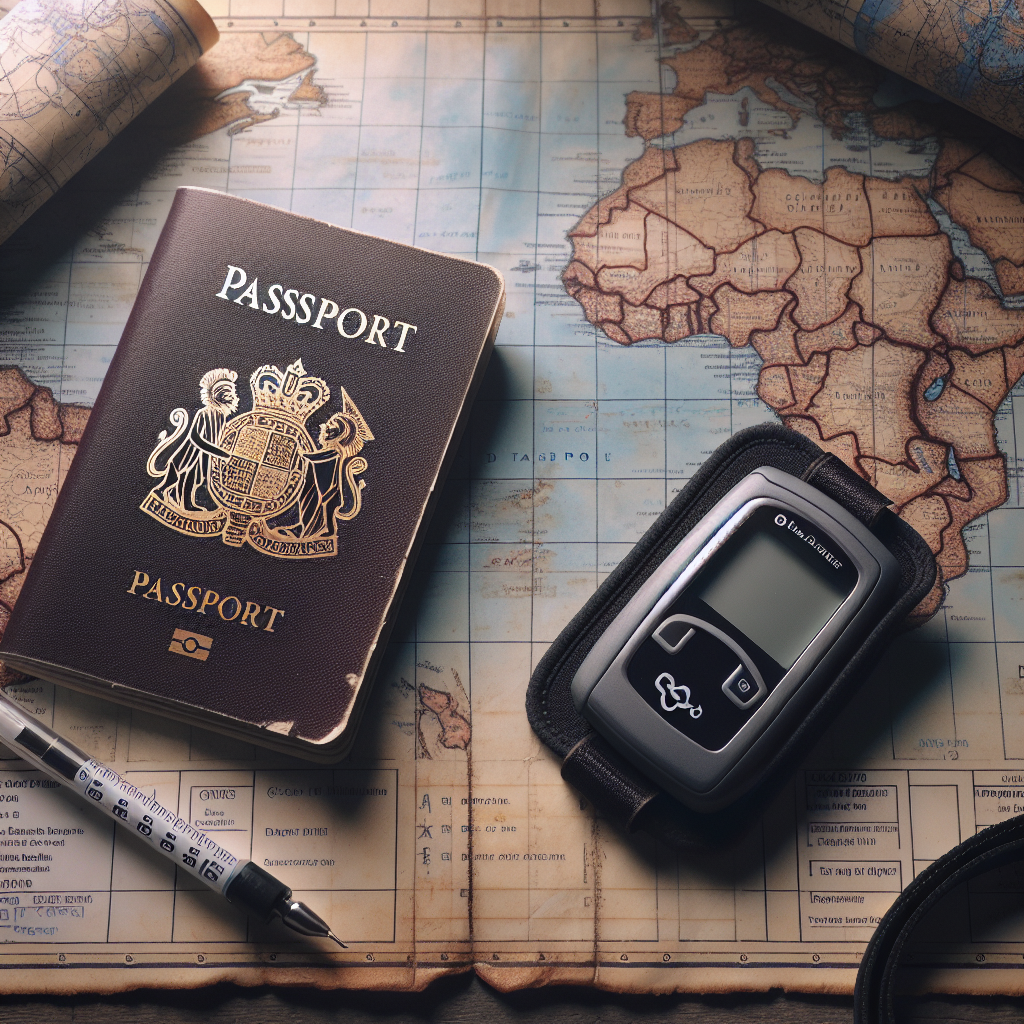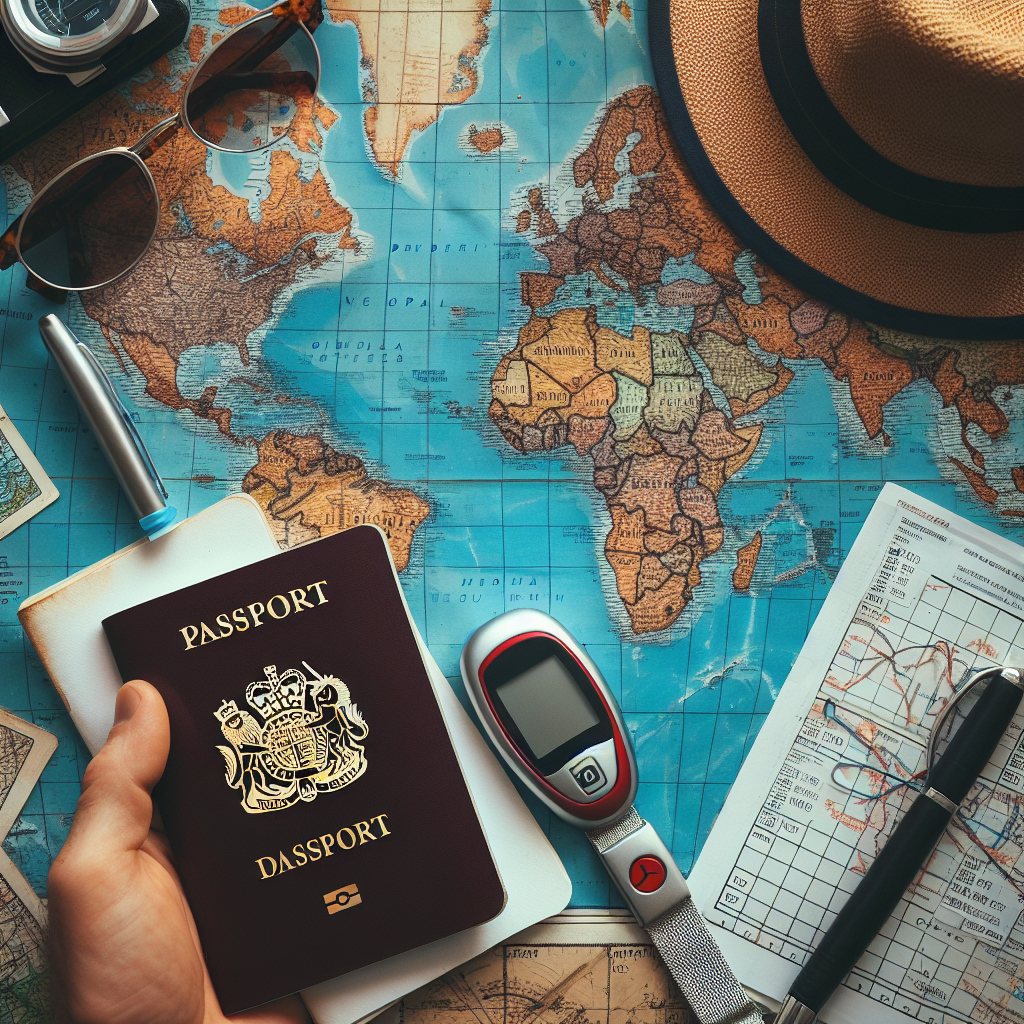Planning a trip can be exciting, but for individuals with diabetes, it often brings an added layer of concern. The question arises: How do you travel with a diabetic letter? Whether you are traveling by air, train, or bus, having a diabetic letter can provide reassurance and help alleviate any potential difficulties that may arise during your journey. In this article, we will explore the importance of carrying a diabetic letter while traveling and provide helpful tips on how to navigate your travels with ease, ensuring a worry-free trip for individuals with diabetes.
What is a Diabetic Letter?
Explanation of a Diabetic Letter
A diabetic letter is a document that provides important information about an individual’s diabetes and their need for insulin and other medications. It is typically written by a healthcare professional and serves as a form of documentation to assist individuals with diabetes while traveling. The letter contains details about the traveler’s medical condition, their medication and insulin requirements, emergency contact information, and any specific requests or accommodations that may be needed.
Purpose of a Diabetic Letter
The purpose of a diabetic letter is to ensure that individuals with diabetes can travel safely and without any unnecessary complications. It serves as a written confirmation of their medical condition and the need for carrying insulin and other medications. The letter is helpful in various situations, such as when going through security checks at airports, crossing international borders, or during emergency situations. It provides peace of mind for the traveler and allows them to have all the necessary information readily available if needed.
When is a Diabetic Letter Needed?
Travelling with insulin and diabetes medication
If you have diabetes and need to travel with insulin and other diabetes medications, it is strongly recommended to have a diabetic letter. This will help avoid any misunderstanding or delays at airports and other transportation checkpoints. Having a diabetic letter will ensure that you are allowed to carry your necessary medical supplies with you and that you will not face any difficulties in case of security checks.
Crossing international borders
When traveling across international borders, it is crucial to have a diabetic letter. Customs officials may have different rules and regulations regarding the transportation of medications, including insulin. Having a letter that clearly explains your medical condition and the need for insulin will help facilitate a smooth entry into another country without any unnecessary delays or complications.
Security checks at airports
Airports often have strict security procedures that may involve screening and inspection of your belongings. It is important to have a diabetic letter to present to the security officers if they have any questions or concerns about your insulin and medication. This will help them understand your situation and ensure that you are allowed to carry your medical supplies with you.
Emergency situations
In case of an emergency, having a diabetic letter can be extremely helpful. It provides vital information about your medical condition, medication, and emergency contact information. This can be critical if you require medical assistance while traveling, as healthcare professionals will have all the necessary information readily available to provide appropriate care.

How to Obtain a Diabetic Letter
Consulting a healthcare professional
To obtain a diabetic letter, it is necessary to consult a healthcare professional who is familiar with your diabetes management. This can be your primary care physician, endocrinologist, or any other healthcare provider who has knowledge of your medical condition. They will be able to assess your specific needs, provide appropriate documentation, and ensure that the letter contains all the necessary information.
Requesting a diabetic letter
Once you have consulted with your healthcare professional, you can request them to provide you with a diabetic letter. Inform them about your travel plans, including the destinations and duration of your trip, as this information may be relevant for the letter. It is advisable to request the letter well in advance to allow ample time for any necessary revisions or translations, if required.
Including necessary information in the letter
The diabetic letter should include specific details to ensure that it effectively serves its purpose. It should start with your personal details, such as your name, date of birth, and passport information. It should also state your type of diabetes and provide a summary of your medical condition. Additionally, the letter should clearly mention the medications and insulin you require, including dosages and frequencies. Emergency contact information, including the name and phone number of your healthcare provider or an emergency contact person, should also be included. Finally, if you have any specific requests or accommodations, such as the need for a refrigerator to store your insulin, make sure to mention them in the letter.
Important Information to Include
Personal details of the traveler
The diabetic letter should include personal details of the traveler, such as their full name, date of birth, and passport information. This information helps establish the identity of the individual and ensures that the letter is specifically intended for them.
Type of diabetes
It is important to mention the type of diabetes in the letter. Whether you have type 1 diabetes, type 2 diabetes, or any other form, this information provides crucial context about your medical condition and influences the treatment and insulin requirements.
Details about the medication and insulin
The letter should clearly state the medications and insulin that you require. This includes the names of the medications, dosages, and frequencies of administration. Providing accurate details ensures that there are no misunderstandings and that you have the necessary supplies with you at all times.
Emergency contact information
Including emergency contact information in the letter is vital in case of any unforeseen circumstances. You should provide the name and phone number of a healthcare provider or an emergency contact person who can be reached in case of emergencies. This allows medical professionals to quickly access the information they need to provide appropriate care.
Any specific requests or accommodations
If you have any specific requests or accommodations, it is important to mention them in the letter. For example, if you require a refrigerator to store your insulin, or if you need assistance with administering your medications, make sure to communicate these needs clearly. This ensures that your travel experience is as comfortable and safe as possible.

Carrying the Diabetic Letter
Keeping the letter with you at all times
Once you have obtained the diabetic letter, it is crucial to keep it with you at all times during your travels. Store it in a safe and easily accessible place, such as your wallet, purse, or carry-on bag. This ensures that you can present the letter whenever necessary, such as during security checks or if you require medical assistance.
Informing travel companions about its existence
It is important to inform your travel companions, such as friends, family members, or travel partners, about the existence of the diabetic letter. They should be aware of its importance and know where you keep it. In case of an emergency or if you are unable to communicate, your travel companions can provide the letter to medical professionals on your behalf.
Multiple copies and translations
Consider having multiple copies of the diabetic letter. This ensures that you have backups in case of loss or damage to the original letter. It is also advisable to have translations of the letter if you are traveling to a country where English may not be widely spoken or understood. Having the letter translated into the local language can help facilitate communication and avoid any potential misunderstandings.
Medical ID Bracelets and Tags
The significance of medical ID bracelets or tags
In addition to carrying a diabetic letter, it is highly recommended to wear a medical ID bracelet or tag. These identification accessories serve as visual reminders for emergency responders and healthcare professionals about your medical condition. They are designed to provide important information quickly, even if you are unable to communicate.
Benefits and purpose
Medical ID bracelets or tags can provide crucial information in emergency situations, such as allergies, medical conditions, or the need for specific treatments like insulin. They also act as a form of prompt identification, allowing medical professionals to quickly understand your situation and provide appropriate care. By wearing a medical ID bracelet or tag, you are ensuring that you receive timely and accurate medical attention when needed.
Emergency identification
During an emergency, when time is of the essence, a medical ID bracelet or tag can be invaluable in communicating your diabetes diagnosis and treatment requirements. Paramedics or other healthcare professionals will be able to recognize the bracelet or tag and respond accordingly, potentially saving vital minutes in critical situations.

Air Travel Rules and Regulations
Contacting the airline in advance
Before traveling by air, it is advisable to contact the airline in advance to familiarize yourself with their rules and regulations regarding carrying insulin and other diabetes medications. Each airline may have different policies, and it is important to understand any specific requirements or documentation they may expect from you.
Understanding airport security procedures
Airport security procedures can vary from one country to another, but it is important to be prepared when carrying insulin and other diabetes medications. Communicate with the security officers that you have diabetes and carry medical supplies. Present your diabetic letter and be cooperative during the screening process. Understanding the security procedures in advance can help avoid any unnecessary delays or complications.
Dealing with insulin and medication during the flight
During the flight, it is important to store your insulin and medications properly. Insulin should be kept in an insulated bag or a cooling pouch to maintain its temperature. Store it in your carry-on bag rather than checked luggage, as the temperature in the cargo hold can be extreme. Additionally, insulin and medications should be easily accessible in case you need them during the flight. Keep them in their original packaging with clearly visible labels.
Travelling with Insulin and Medications
Tips on packing insulin and medication
When traveling with insulin and medications, it is crucial to pack them carefully to ensure their safety and efficacy. Pack enough supplies for the duration of your trip, plus a few extra days in case of unexpected delays. Keep them in their original packaging whenever possible, as it provides important information such as dosage instructions and expiration dates.
Proper storage during travel
Insulin and medications should be stored in a cool and dry place during travel. Extreme temperatures can affect their potency and effectiveness. To maintain the right temperature, consider using an insulated bag or a cooling pouch specifically designed for storing medication.
Carrying necessary supplies and backups
It is important to carry all necessary supplies for managing your diabetes, including glucose monitoring devices, testing strips, lancets, and backup needles or syringes. These supplies should be packed securely to prevent damage. Having backups ensures that you are prepared for any unforeseen circumstances, such as loss or damage to your primary supplies.

Crossing International Borders
Understanding customs regulations
When crossing international borders, it is essential to understand the customs regulations of the countries you are traveling to and from. Different countries may have specific rules and requirements regarding the transportation of medications and insulin. Research and familiarize yourself with these regulations to avoid any legal issues or delays.
Carrying a doctor’s prescription
Having a doctor’s prescription for insulin and other medications can be beneficial while traveling. It serves as additional proof that the medications are necessary for your medical condition. Make sure to carry copies of your prescriptions, preferably translated into the local language, to facilitate communication with customs officials if necessary.
Translations of diabetic letter if necessary
If you are traveling to a country where English may not be widely understood, it is advisable to have translations of your diabetic letter. Translations can help overcome language barriers and ensure that the authorities or healthcare professionals can easily comprehend the contents of the letter. This will avoid any potential misunderstandings and facilitate a smoother travel experience.
Conclusion
Importance of a diabetic letter
A diabetic letter is a valuable document for individuals with diabetes who are traveling. It provides essential information about their medical condition, medication and insulin requirements, and emergency contact information. Having a diabetic letter ensures smooth travel experiences, particularly when going through security checks at airports, crossing international borders, or during emergency situations.
Peace of mind while traveling with diabetes
Traveling with diabetes can be overwhelming, but having a diabetic letter brings peace of mind. It serves as a form of documentation that allows individuals to carry their necessary medical supplies and explains their condition to relevant authorities. With a diabetic letter, individuals can travel confidently, knowing that they have the necessary documentation to support their medical needs.
Taking necessary precautions
While a diabetic letter provides important documentation, it is also important to take additional precautions when traveling with diabetes. This can include wearing a medical ID bracelet or tag, consulting with healthcare professionals before the trip, and packing insulin and medications properly. By being prepared and informed, individuals with diabetes can enjoy their travels while prioritizing their health and safety.


